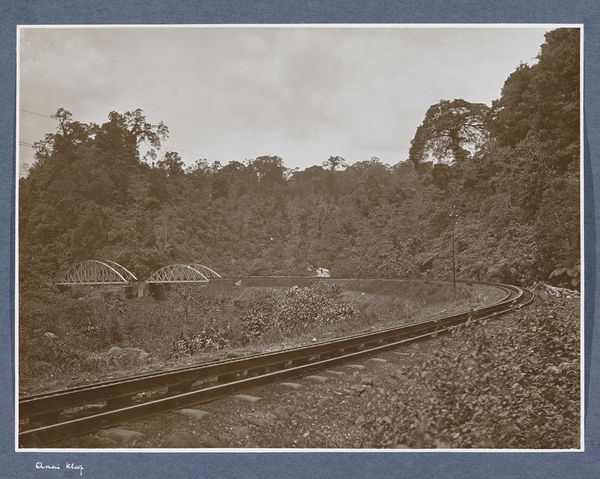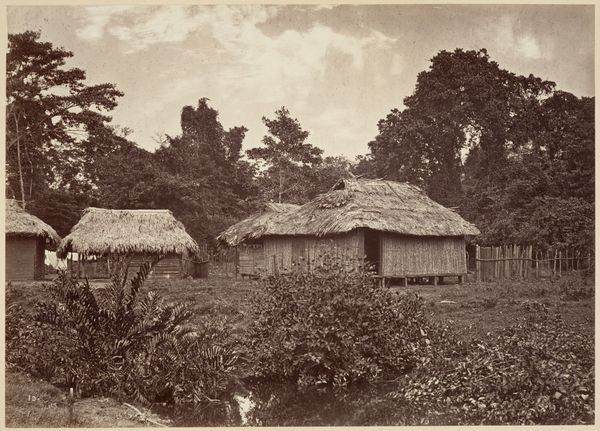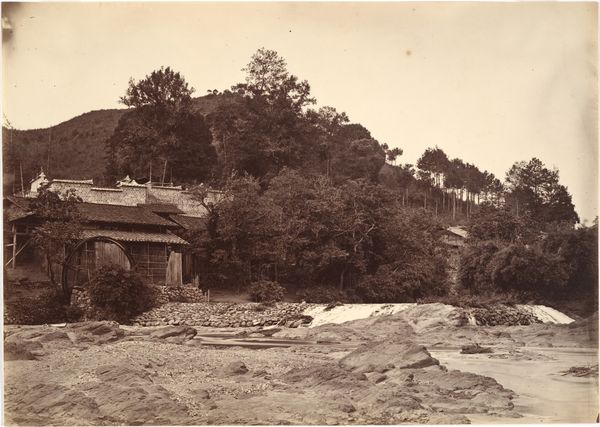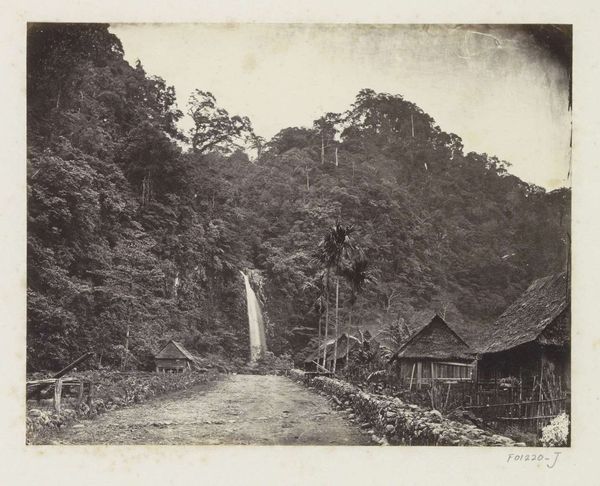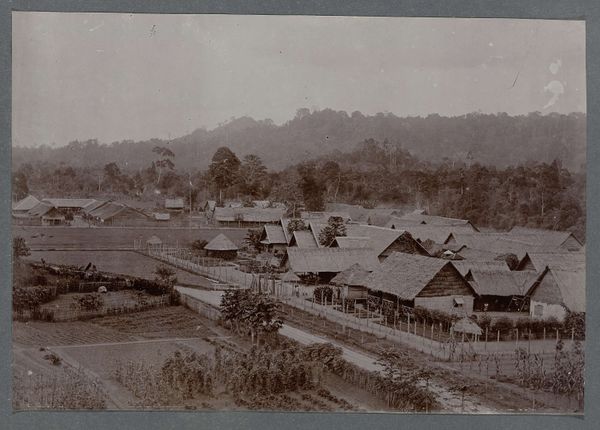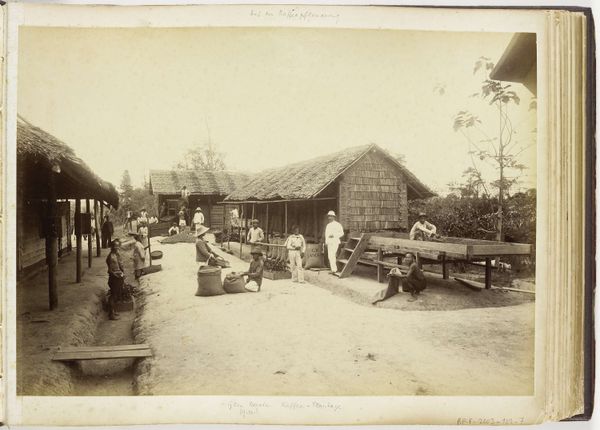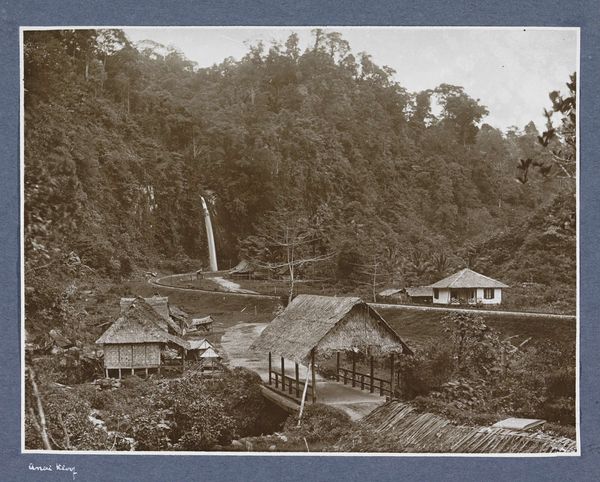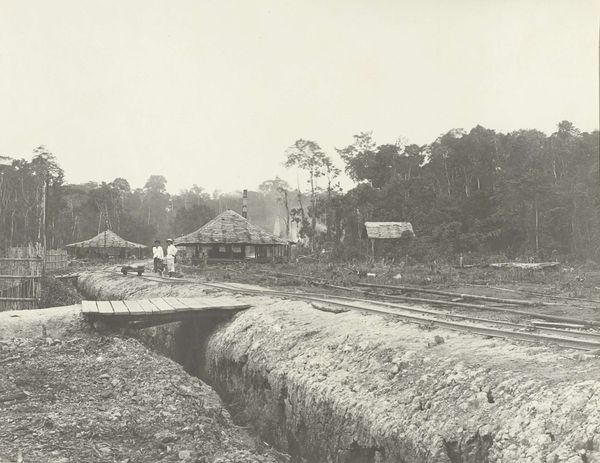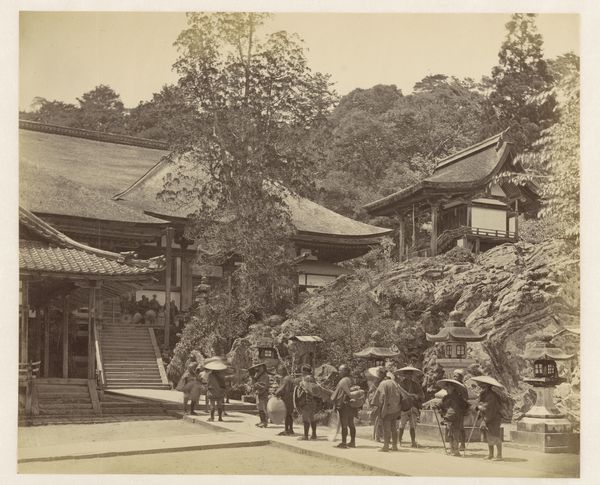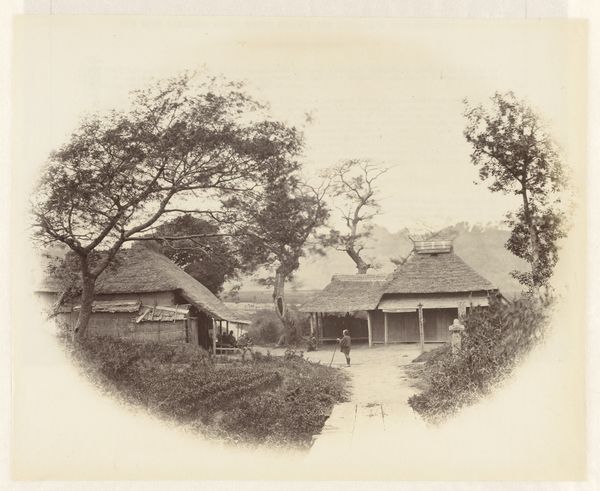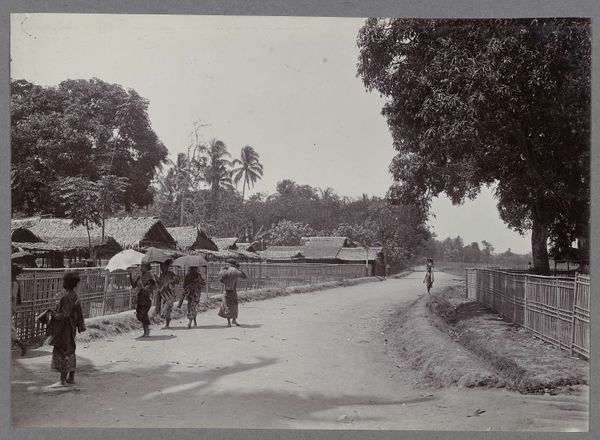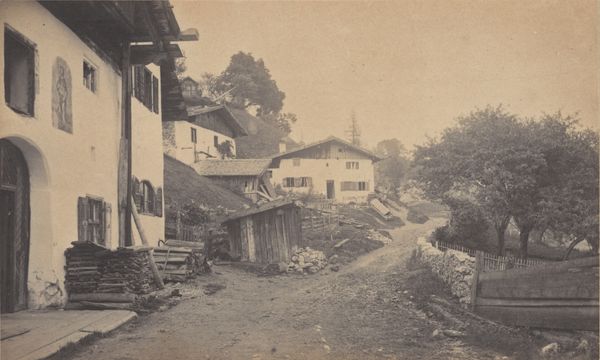
photography, gelatin-silver-print
#
asian-art
#
landscape
#
outdoor photograph
#
outdoor photo
#
street-photography
#
photography
#
orientalism
#
gelatin-silver-print
#
monochrome photography
#
academic-art
#
monochrome
Dimensions: height 213 mm, width 277 mm
Copyright: Rijks Museum: Open Domain
Curator: This gelatin silver print from 1867, now residing at the Rijksmuseum, is attributed to Felice Beato and titled "Samurai by the Palace of Daimyo Shimazu Tadayoshi of Satsuma." Editor: The mood is immediately striking. Stark. There's a stillness despite the implied narrative. And the linear repetition of the architecture juxtaposed with the organic forms surrounding it... compelling. Curator: It’s compelling on several levels. Beato's work exists at a fascinating crossroads—both art and document, shaped by colonial dynamics and the western gaze upon Japan during the end of the Edo period. It provided a controlled view, quite unlike the messy realities of a society in transition. Editor: Right, and this control is also evidenced by the printing technique itself. The sharpness achievable through gelatin silver contrasts sharply with earlier photographic processes and reinforces the almost scientific “objectivity” it seeks to project. I'm wondering about labor, how Beato's presence, with camera and chemicals, impacted the very scene he purported to capture objectively. Curator: That's it exactly, it reminds me of how Japan was transitioning to the modern era while seeking to maintain its identity and traditions in the face of Western influence. Beato’s images become valuable political objects within that transitional moment. The figure positioned by the wall... is that for scale? Does he stand as a testament? Editor: Or perhaps to emphasize production—the regimented structure against nature, civilization shaping environment? Even the apparent "natural" landscape seems curated, organized as are the Samurai themselves. Curator: I agree. These Samurai are actively performing in Beato's tableau. He frames them, quite literally, within a very particular narrative – the Western perception of Japan’s exotic and rigidly hierarchical society. Editor: It pushes us to consider what’s intentionally revealed versus what gets obscured through the image-making process. I love how analyzing materiality, its production helps us rethink the presumed intention behind images such as these. Curator: Absolutely. And understanding its historical context forces us to reconcile the photograph's artistry with its complex position in global power dynamics of that time. Editor: It reveals, even in its apparent stillness, an incredibly dynamic relationship between maker, subject, and ultimately, the audience observing it over a century later.
Comments
No comments
Be the first to comment and join the conversation on the ultimate creative platform.
